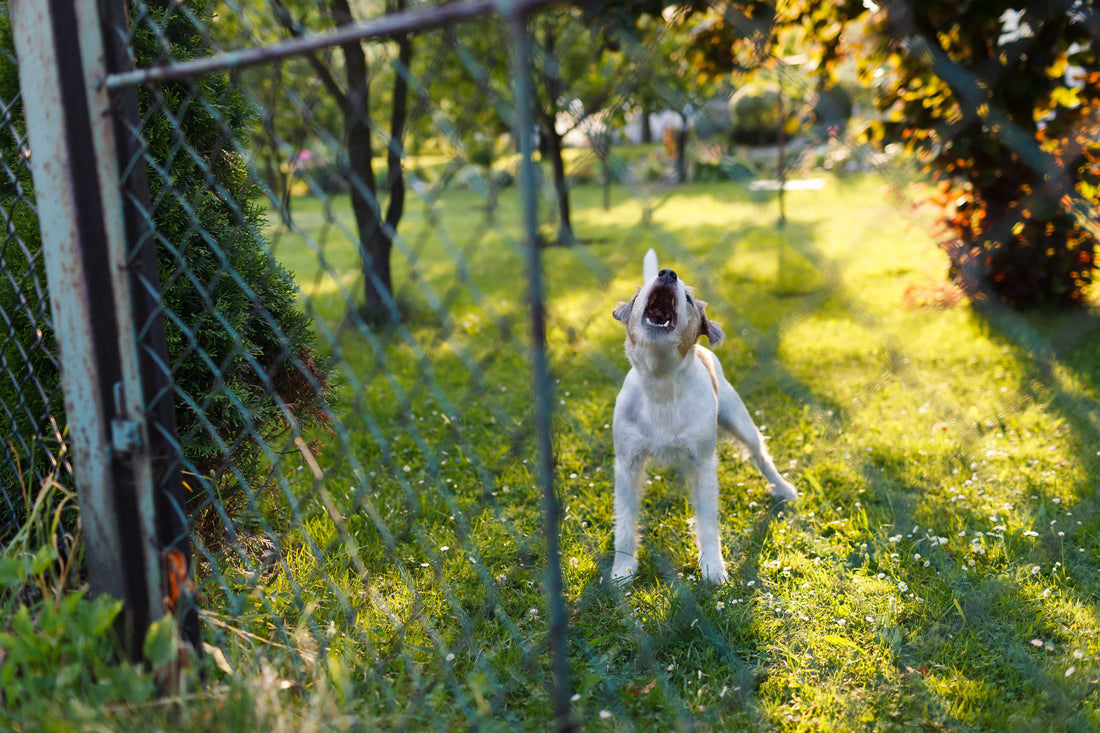Barking is a natural form of communication for dogs, but understanding the different types of barking can help you address your dog's needs more effectively. Recognising whether your dog is barking out of alertness, territorial instinct, playfulness, anxiety, or for attention can guide you in providing the best care and training. This blog explores the various types of barking and offers tips on managing each.
Alert Barking
This is your dog's way of saying, ‘Hey, something’s up!’ Alert barking happens when a dog senses something unusual or unfamiliar in their environment. They bark to warn you about potential threats or changes around them.
Alert barking is typically sharp and repetitive. Dogs might bark at the sound of the doorbell, a strange noise outside noises, the presence of strangers, or even a squirrel. This type of barking is often accompanied by a heightened state of awareness, such as raised ears and a focused gaze.
To manage alert barking, acknowledge your dog’s warning and then calmly redirect their attention. Training your dog to respond to commands like ‘quiet’ or ‘leave it’ can also help. Providing a consistent environment and minimising sudden changes can reduce instances of alert barking.
Territorial Barking
When your dog barks to guard their territory, they’re acting like a little watchdog. Territorial barking is driven by a dog’s instinct to protect their home and family. This type of barking occurs when a dog perceives an intruder or threat to their territory. Territorial barking is often louder, more intense and more persistent than alert barking. Dogs may bark at people or animals passing by windows or entering their front yard. They might also show signs of aggression, such as growling or lunging.
To manage territorial barking, establish boundaries and consistent rules for your dog's behaviour. Using positive reinforcement techniques to reward quiet behaviour and desensitising your dog to common triggers, like the doorbell or neighbourhood dogs, can help reduce this type of barking.
Playful Barking
A happy, excited bark usually means your dog is ready to play! It's often accompanied by tail wags, relaxed body posture, and playful body language like jumping, running, or if they’re really excited, the zoomies. These barks are typically high-pitched and less intense than other types of barking, common during playtime and social interactions with other dogs or people.
Make sure their playful barks don’t become excessive by encouraging your pup’s playful nature while setting boundaries. Engage in regular play sessions to burn off excess energy and provide mental stimulation. Teaching your dog to follow commands like ‘sit’ or ‘stay’ during play can help moderate their excitement. If you have an overly excited pup, use nutritious and yummy treats from The Healthy Pet Co. as a positive reinforcement when they calm down.
Anxiety-Induced Barking
If your dog is feeling stressed or scared, they might bark excessively. This can happen during thunderstorms, when they're alone, or around unfamiliar people or places. Anxiety-induced barking is typically continuous and may be accompanied by other signs of anxiety, such as pacing, whining, drooling, or destructive behaviour.
To manage anxiety-induced barking, create a calm and secure environment for your dog. Gradual desensitisation to anxiety triggers and providing comfort items like a favourite toy or blanket can help. At The Healthy Pet Co., we carry a range of fun and engaging toys that can help distract your pup and redirect their attention to a positive feeling.
Consulting with a veterinarian or a professional dog trainer for behaviour modification techniques and the potential use of anxiety-reducing products can also be beneficial.
Attention-Seeking Barking
Sometimes, dogs bark just to get your attention. This can happen when they want to play, need to go outside, want food or simply in the mood for a cuddle. Attention-seeking barking is often directed at the owner and is accompanied by other attention-seeking behaviours like pawing, jumping, or nudging. If not properly addressed, this type of barking can get persistent and annoying.
To manage, avoid reinforcing the behaviour by giving in to your dog's demands. Instead, reward quiet and calm behaviour with attention and treats. Teaching commands like ‘quiet’ and using scheduled times for play, feeding, and bathroom breaks can help reduce this type of barking.
Ensuring a Happy Home
Understanding these different barks can help you figure out what your dog is trying to tell you. Next time they let loose a howl, pay attention to what’s going on around them and see if you can figure out why they’re barking. At The Healthy Pet Co., we provide expert advice and high-quality products to support your pet's health and happiness. For more tips on managing pet behaviour and ensuring your furry friend leads a happy, quiet life, visit our blog and explore our resources. Let’s create a happy home for your pet!




